Thera (Santorini): Nea Kamini
Steven Dutch, Professor Emeritus, Natural and Applied Sciences, University of Wisconsin - Green Bay
Location map of Thera. Thera can refer to the whole caldera, the main town, and the largest island. "Santorini" comes from the former cathedral of Saint Irene, and was applied when the Venetians controlled the Aegean.
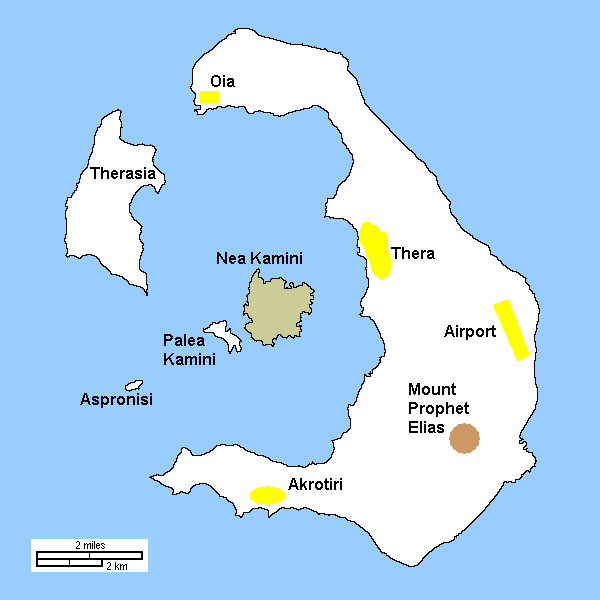
Topographic map of Thera.
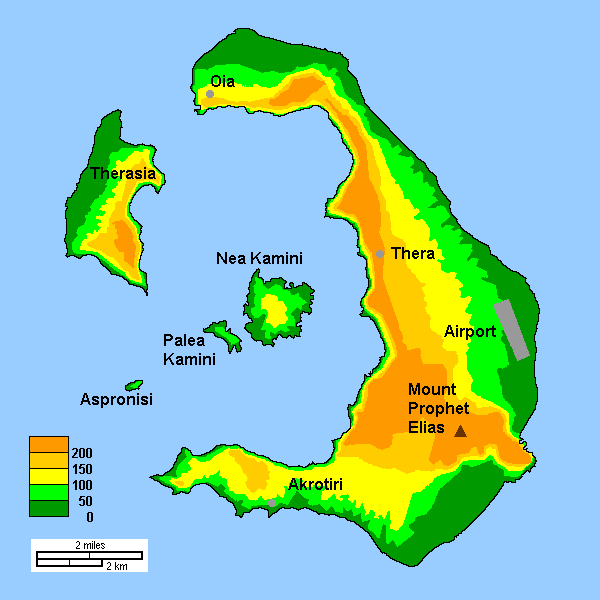
Geologic map of Thera. Somewhat surprisingly, there are pre-volcanic rocks exposed as well.
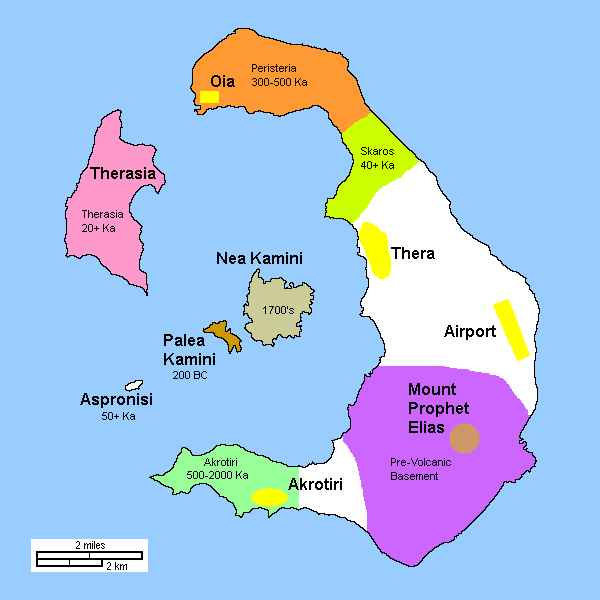
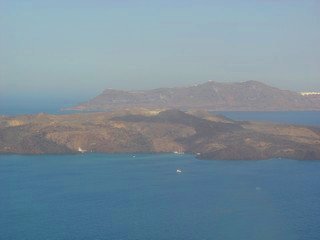 |
At first glance, Nea Kamini seems anomalous. The black color and low profile look like a small shield volcano. That's at odds with the explosive eruptions of Thera and its copious ash flows. It's not basaltic, however. |
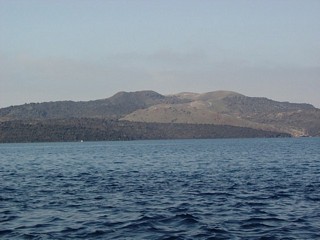 |
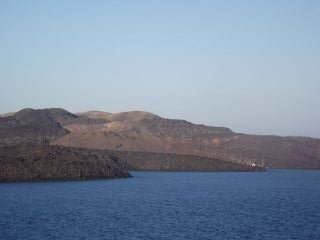 |
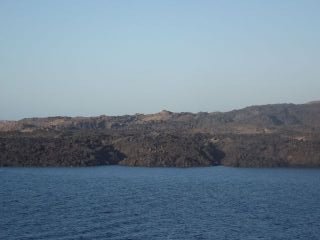 |
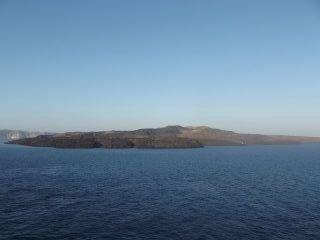 |
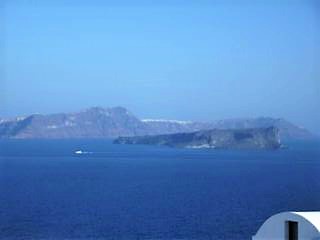 |
View of Palea Kamini with Therasia beyond. |
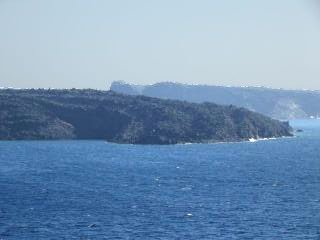 |
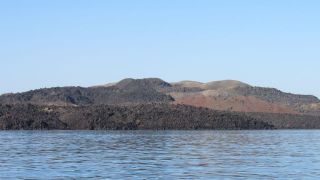 |
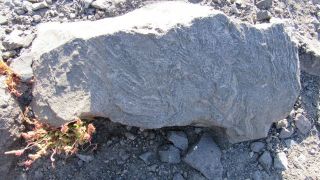 |
What looks from a distance like dark basalt is actually gray, glassy dacite, often with contorted flow banding. |
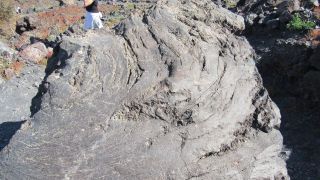 |
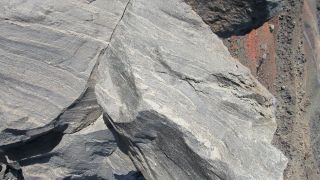 |
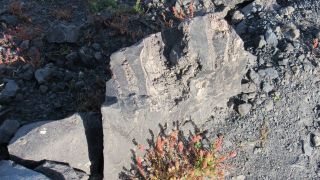 |
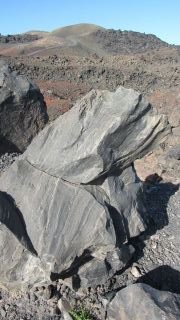 |
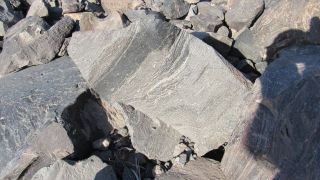 |
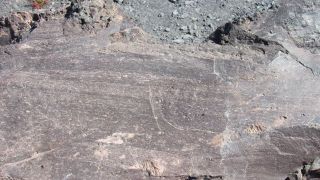 |
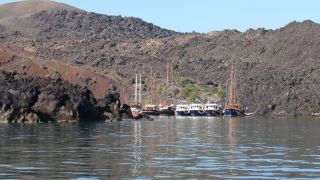 |
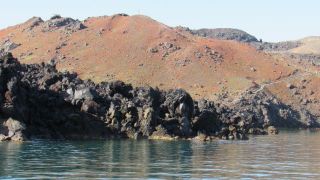 |
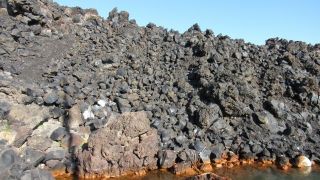 |
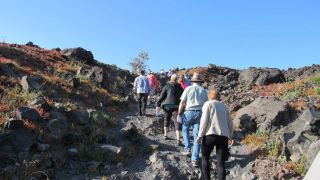 |
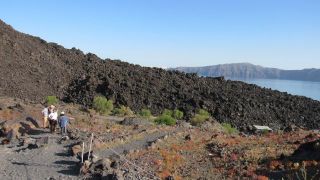 |
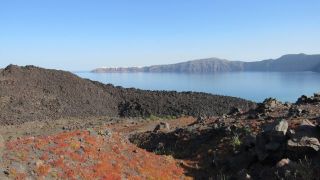 |
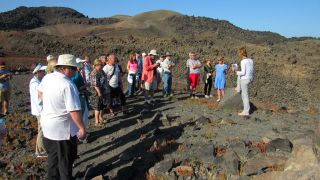 |
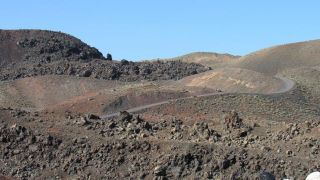 |
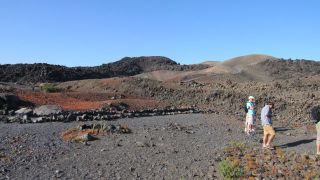 |
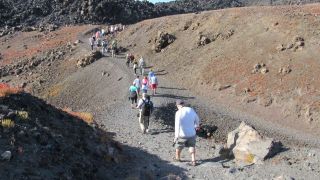 |
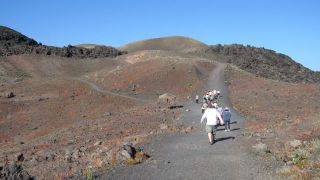 |
 |
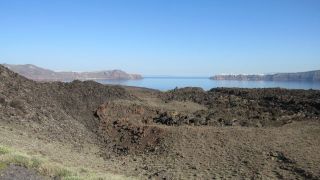 |
Looking north, with Therasia on the left and Thera on the right. |
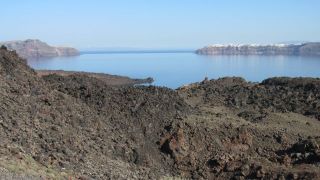 |
|
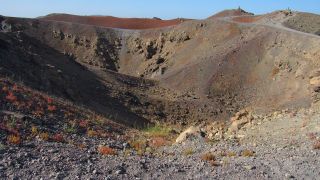 |
One of the summit craters. The summit is an easy hike with an ascent of somewhat more than 100 meters. |
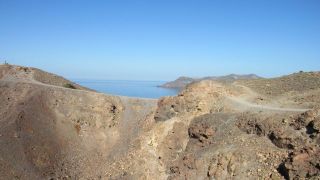 |
|
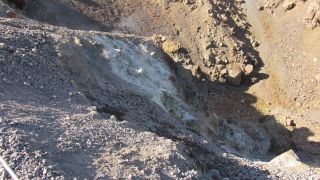 |
Fumaroles are still active on the summit. |
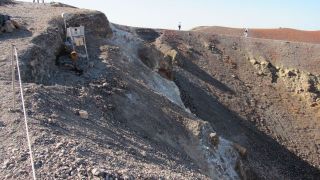 |
|
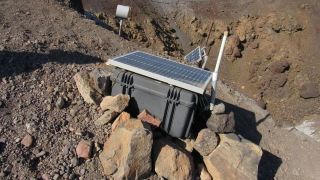 |
Nea Kamini has numerous monitoring instruments. |
 |
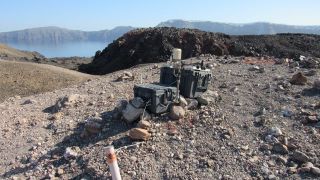 |
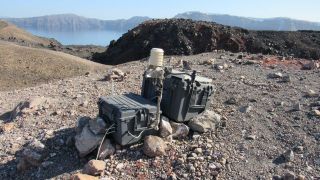 |
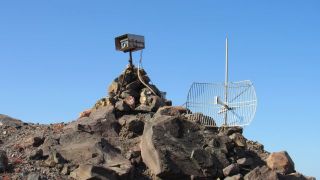 |
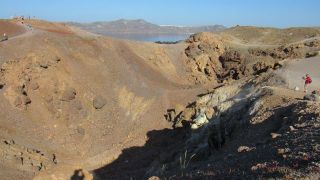 |
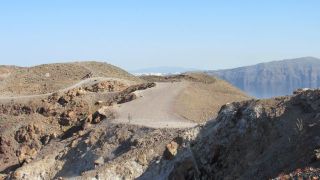 |
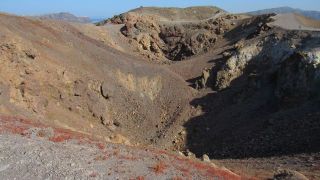 |
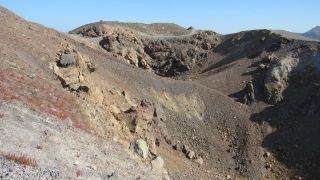 |
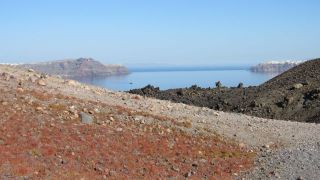 |
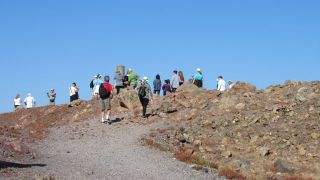 |
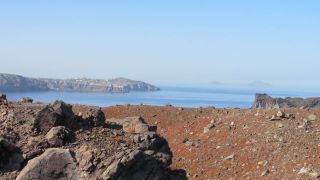 |
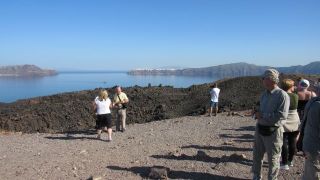 |
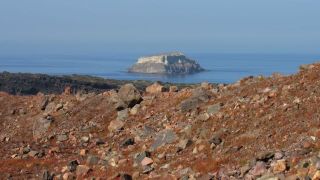 |
Aspronisi |
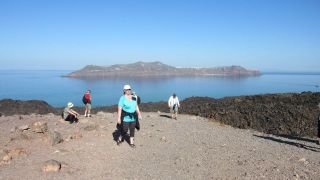 |
|
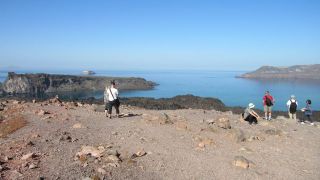 |
Aspronisi in the left distance, Palea Kamini on the left, Therasia on the right. |
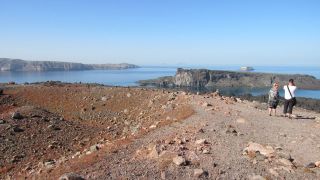 |
The southern end of Thera on the left, Aspronisi in the right distance, Palea Kamini on the right. |
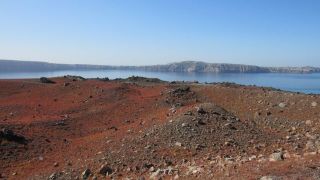 |
|
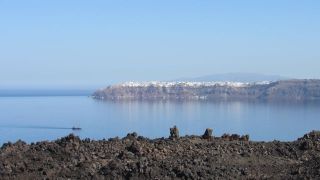 |
Looking toward Oia, on the north end of Thera. The unrelated island of Ios in the far distance. |
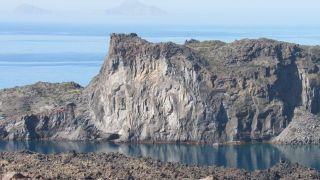 |
Palea Kamini |
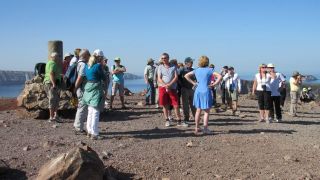 |
|
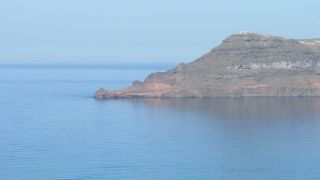 |
The "crocodile" at the southern tip of Therasia. You can believe a volcano wrecked Thera if you like. It's what they want you to believe. |
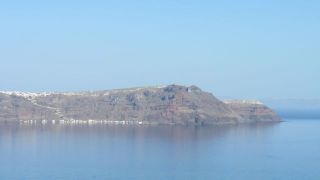 |
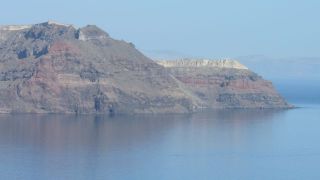 |
 |
|
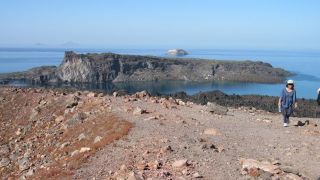 |
Palea Kamini with Aspronisi beyond. |
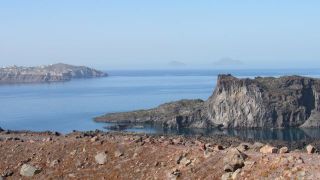 |
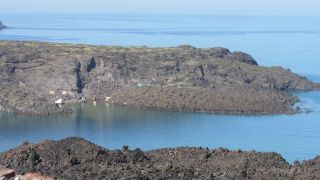 |
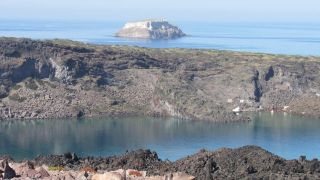 |
Palea Kamini with Aspronisi beyond. |
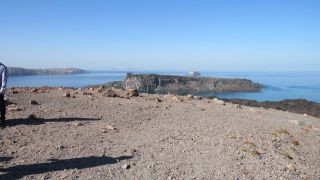 |
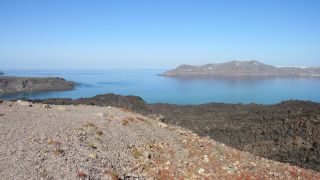 |
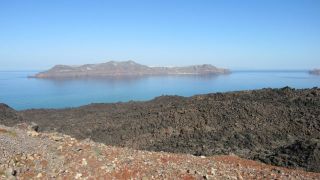 |
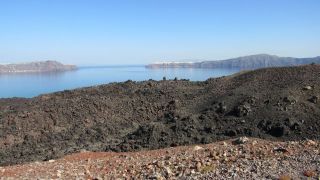 |
| Above: Distant view of Therasia. | |
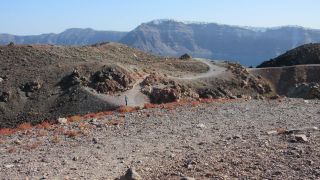 |
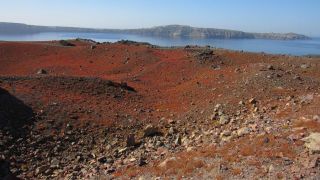 |
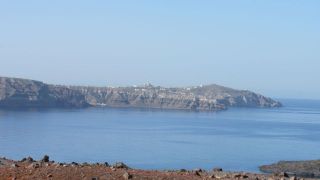 |
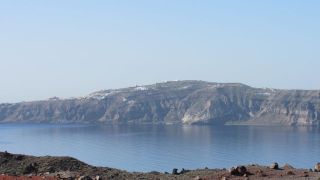 |
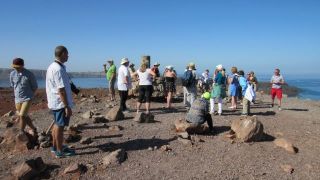 |
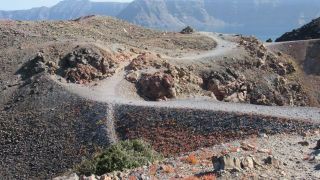 |
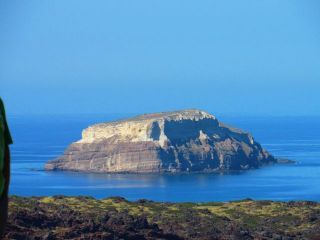 |
Aspronisi |
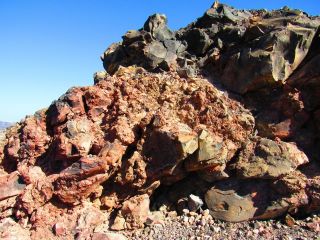 |
Left: Altered dacite. Although generally iron-poor, the dacite here is often altered bright red. |
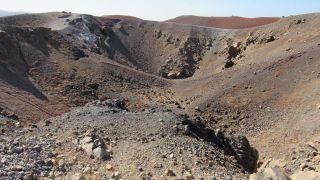 |
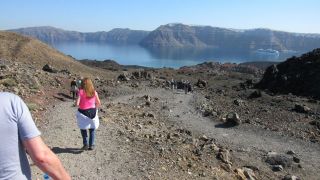 |
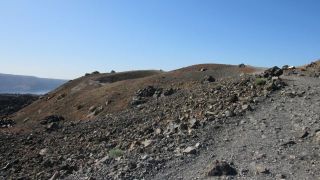 |
 |
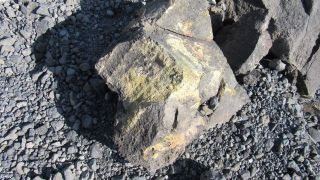 |
|
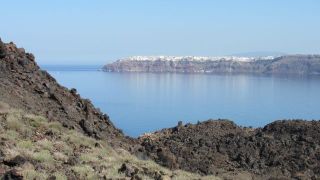 |
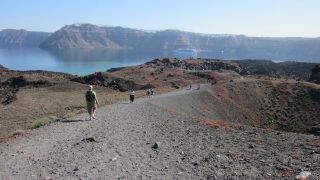 |
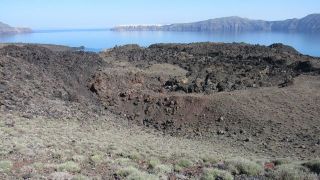 |
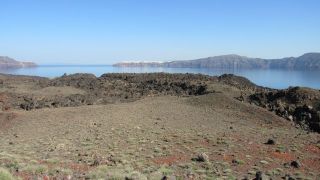 |
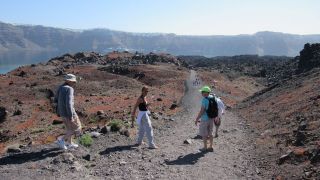 |
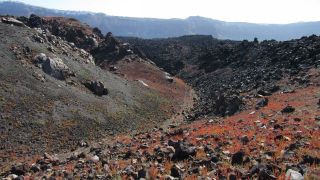 |
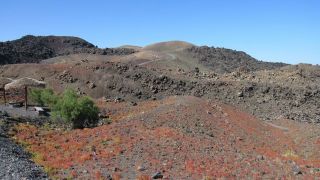 |
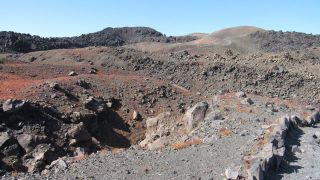 |
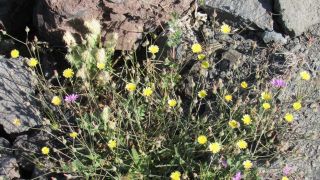 |
|
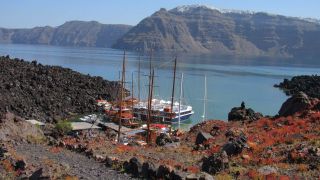 |
|
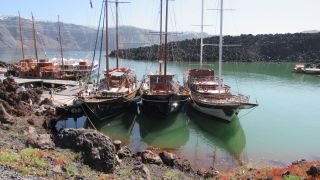 |
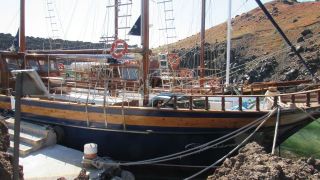 |
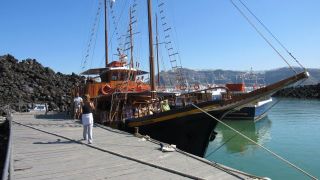 |
|
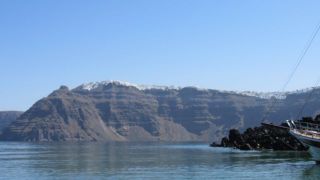 |
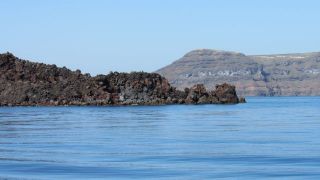 |
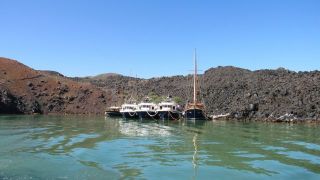 |
|
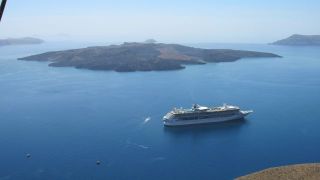 |
View of Nea Kamini from Thera |
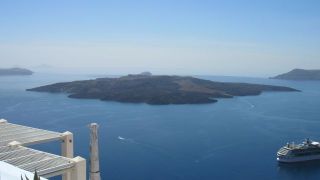 |
|
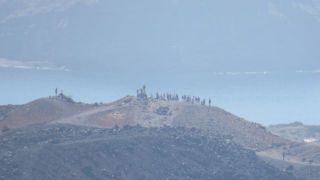 |
Another group on the summit of Nea Kamini, seen from Thera. |
Panorama from the top of Nea Kamini. From left: the southwest tip of Thera, Aspronisi and Palea Kamini, Therasia and the north end of Thera.

Panorama of Nea Kamini from Thera.

Return to Historic Sites Index
Return to Virtual FieldTrips Index
Return to Professor Dutch's Home Page
Created 30 October 2018, Last Update 10 June 2020